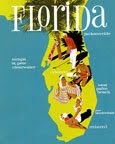–The WPA Guide to the Southernmost State, 1939
WHAT: Much has changed on Anna Maria Island since 1937. The palm savannahs surrendered to beach cottages, and while the island itself rises but a few feet above the warm, turquoise Gulf, bungalows at Anna Maria’s edge prop themselves like mangroves, resting just out of reach of salt and waves.
 The spirit of the island remains untouched. Sand and shells abound, and the entire low-lying tropical jungle has bursts of blazing pink bougainvillea cascading over fences and dazzling orange birds of paradise standing guard along walkways. While the other side of Tampa Bay boasts the most densely populated county in the state, the pink Don CeSar in the distance fades against the tropical landscape of colors and the ever-permeating salt air.
The spirit of the island remains untouched. Sand and shells abound, and the entire low-lying tropical jungle has bursts of blazing pink bougainvillea cascading over fences and dazzling orange birds of paradise standing guard along walkways. While the other side of Tampa Bay boasts the most densely populated county in the state, the pink Don CeSar in the distance fades against the tropical landscape of colors and the ever-permeating salt air.
WHY: You can draw the silhouette of much of Florida’s coast with condominium-and hotel-colored crayons. Not so here; everything on this seven-mile strip of paradise –even her stilt homes –is short. The island draws tourists without needing tall hotels and convention centers; visitors can make their way around the island’s shell-lined streets and paths using foot or pedal power. The island has no chain restaurants, and while you can get milk at a local market, you’ll need to head to the next town over for a supermarket.
WHO: It’s a small town of locals and visitors, fishermen and sunbathers. Anna Maria is one of six incorporated cities in Manatee county, a county with a third of the people of its neighbor to the north, Pinellas.
WHERE: If you look across Tampa Bay from Pass-a-Grille or Fort DeSoto, you can see Anna Maria in the distance. By boat it’s a short hop around Egmont to Anna Maria; by car, it’s just under an hour to cover the same distance. Anna Maria is at the northernmost tip of Manatee’s nothernmost barrier island.
BEST part: Anna Maria Island evokes memories of the Florida in your heart, the sandy paradise that draws people here year after year. It’s old Florida with air conditioning, bleached shell paths that crunch under your feet, and coral sunsets dotted with crimson blossoms. It’s fishing piers and walks on the beach; it’s beer at sunset and fish for dinner. Every part is the best part.
 WORST part: With beaches everywhere, it’s a shame the city doesn’t allow dogs on at least one of them. There are a few places along the bay where you can get away with letting your pooch run off leash, but they’re not designated as dog beaches and you run the risk of being told to take your furry friend off the sand. Locals say there’s talk of a dog beach.
WORST part: With beaches everywhere, it’s a shame the city doesn’t allow dogs on at least one of them. There are a few places along the bay where you can get away with letting your pooch run off leash, but they’re not designated as dog beaches and you run the risk of being told to take your furry friend off the sand. Locals say there’s talk of a dog beach.
MAGIC Question: Free. Lodging and food run the gamut. Expect to pay a premium for waterside accommodations, although you can get a room for under $100 a night. Weekly stays cost less per night.











